- Leading HANAC: Stacy Bliagos on Community Service in New York
- The Hellenic Initiative Celebrates Record-Breaking Weekend in New York
- Building the Future: HANAC’s 53rd Anniversary Gala Honors Advocates for Affordable Housing and Community Care
- Leona Lewis: Las Vegas residency ‘A Starry Night’
- Emmanuel Velivasakis, Distinguished Engineer and Author, Presents His Book at the Hellenic Cultural Center
Modern Greece and Greeks …In Whose Image?
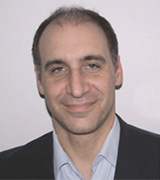
Alexander Billinis
Many Greeks and foreigners consider today’s Hellas to be the resurrection of a lost ancient polity, Classical Greece. The Greece that emerged from Ottoman rule after a chaotic, heroic yet haphazard war of independence received a measure of independence in 1830. The three Great Powers, Britain, Russia, and France which midwifed Greece’s birth (or rebirth if you prefer) sought to create this state in their own image.
While one of the three guarantors, Orthodox Christian Imperial Russia, was well disposed to a resurrected Greece with a Byzantine identity (particularly if they could control it), the other two guaranteeing powers, Britain and France, together with the rest of Roman Catholic or Protestant Europe, certainly had no great love for Orthodoxy and Byzantium. Further, the Western Philhellenes, first and foremost the martyred Lord Byron, but also the marble-loving Lord Elgin, were motivated by a love for Classical Greece rather than its high medieval version, Byzantium. In this, they were joined by many Greek Diaspora figures in the West, merchants in Vienna, Venice, London, and Paris, and key intellectuals such as the linguist Ioannis Koraes, who championed a Classical Greek language and identity much admired by Enlightenment Europeans. The Byzantine, pan-Orthodox, more diverse and mosaic view of people like Rigas Pheraios (see my article “Rigas Pheraios: My Kind of Hero,” in November 2013 Neo Magazine) partially lost out to the Classical vision.
That the new state ipso spatially possessed many of the key Classical Greek sites so beloved of the West, most notably the semi-intact and still sublime Parthenon, and that the people, though dressed in oriental costumes, often (italics mine and deliberate) spoke a demotic version of the beloved ancient tongue, was enough to baptize the new state as a rebirth of Classical Greece. After the unfortunate demise of Kapodistrias to an assassin’s bullet, the king chosen for Greece, Otto of Bavaria, came from a family of Classical devotees. Parts of Munich looked as if pulled from ancient Greek blueprints, and the Bavarian regime sought to re-make Greece into that image. For symbolic reasons the capital was moved from the relatively large and developed city of Nauplion to the hardscrabble village of Athens. Neoclassical architecture sprung up in the dusty village, competing cheek and jowl with ancient monuments, squat Byzantine churches, and the hulks of now congregation-less mosques, to create a city in Europe’s image of Greece, rather than Greece’s image of itself.
Alphabet armies teaching a Greek purged of foreign words descended on towns, villages, and islands to teach a population where illiteracy was the vast norm. In some cases, such as my island of Hydra and elsewhere in the Peloponnesus, Evia, Thebes, and Athens itself, the spoken language was a Tosk version of Albanian called Arvanitika. Some of the mosaic left over from 400 years of Ottoman and Venetian rule was allowed to remain, such as the well-established Roman Catholic communities in the Cyclades, but the few Muslims who survived the massacres of the revolution generally “returned” to the fold. Among them, from a village above Monemvasia, was a 26 year old from a mixed Christian-Muslim marriage named Haralambos, newly baptized into the Greek Orthodox Church in 1836 (see my article “Unofficial Histories: 1821” in April 2014 Neo Magazine). He was my grandfather’s grandfather. His surname, Meimetis, still common in the area, reflects this former Muslim identity which my grandfather changed to his mother’s maiden name, the Venetian-derived Billinis! Name changes don’t just occur at Ellis Island, sometimes they happened before.
This is called nation building, and every nation does it, whether massive melting pots such as America or Australia, or more homogeneous nations such as Greece, Bulgaria or Italy. All derive from mosaics, and all, to some degree or another, are acts of state, faith, fiat, and force. The Greek State was based on Hellenizing elements of the Byzantine-Ottoman mosaic that did not conform to the official state religion, Orthodoxy, or the official language, Greek, and emphasizing the Classical rather than Byzantine inheritance of the “reborn” state.
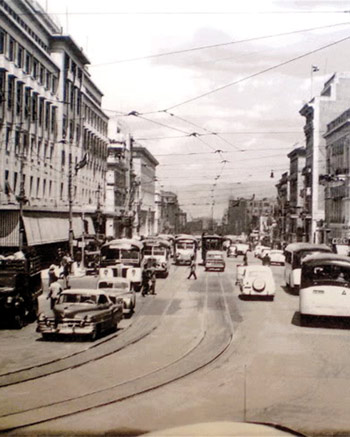
Athens 1950
This identity was based on a continuity of Greece from Classical times, and the uniqueness of the Greek people from others, particularly from Greece’s nearest neighbors, Turks, Albanians, Balkan Slavs, and Romanians/Vlachs. The fact that, to use a Balkan village term, “only an onion skin” had separated Greeks from these peoples in the past was conveniently forgotten. Walls of identity went up, and non-conforming had to conform. This nation-building process was mirrored in other Balkan countries, where the Byzantine-Ottoman mosaic was selectively reformed or deformed to create titular homogeneous states, often done with horrific violence to neighbors and minorities, who would not forget, and would seek revenge. Orthodox Bulgarians, Greeks, and Serbs expelled or selectively assimilated local Muslims, or Bulgarians and Greeks slaughtered each other from disputes over their local church’s language, and therefore the local ethnic identity. Icons and frescoes would not be spared if the writing in question was of the “others’” language; defacing Cyrillic or Hellenic, depending on the vandal, was common enough. Then of course, there are the Turks’ genocidal campaigns.
By the time my late father was born, in 1924, this dual Byzantine-Classical identity had endured two Balkan Wars, and the Greek identity then incorporated the equivalent of nearly a quarter of its population from Asia Minor, Thrace, and Bulgaria, often survivors of genocide, assimilating these Byzantines often with different traditions and even languages. School and army did its part to forge Hellenes, many of whom, like my late father, then went abroad.
In America the Greeks carried both a deep attraction for their home region and an often highly official version of Greek history, bolstered by the Greek Orthodox Church education system, then and now. A Greek identity emerged in the Diaspora not much different than that depicted in “The Big Fat Greek Wedding,” where the Ancient Greeks are a badge of pride, the Church’s holy water can make WASP Ian Miller a “Greek,” and every word, whether Kimono, Miller, or Portokalos, “comes from the Greek.”
I always had to laugh about the last word, “Portokalos.” Portokalli is orange in Greek—and Bulgarian—and Romanian—and Turkish—and is likely derived from the Arabic portugul, the word for Portugal! It is a silly example, but one that shows how we are interconnected. Greece is part of a larger region, and so much of that history is shared. Our Byzantine (and Ottoman) mosaic, only partially acknowledged in Greece’s and Greeks’ self-identification, is a real link to our neighbors, Balkan and Turkish. It is a bridge rather than a barrier, if presented correctly. If nothing else, the fact of our commonality should preclude extreme nationalism of Golden Dawn, or some fantasies about genetically pure descent from Pericles and Leonidas. It should make us more human and cosmopolitan, which hardly makes us less Greek.

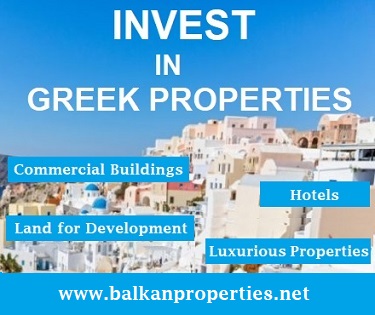


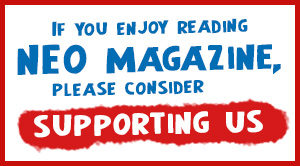



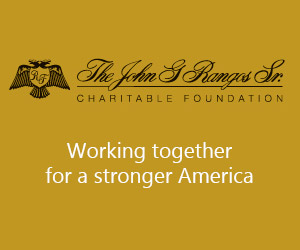


0 comments